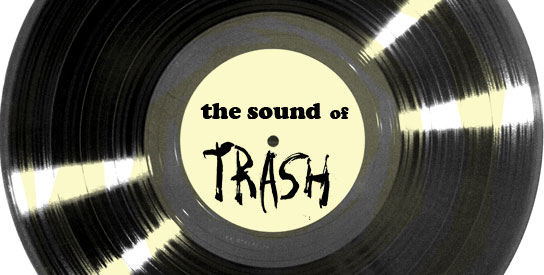
Today I want to share one of my favourite documentaries regarding the art of sound. If you have any interest in early electronic music, the BBC Radiophonic Workshop should mean something to you. They were at the forefront of sound discovery. Perhaps the Radiophonic Workshop’s most famous claim to fame was the Doctor Who theme, which has become so iconic that posting a link to it here would seem condescending. But this barely scratches the surface. The Radiophonic Workshop were responsible for so much more.
The Workshop was created by two of early electronic music’s greatest proponents, Daphne Oram and Desmond Briscoe and boats a penelope of members worthy of attention. Here’s some information from Wikipedia about the Radiophonic Workshop:
The BBC Radiophonic Workshop, one of the sound effects units of the BBC, was created in 1958 to produce effects and new music for radio, and was closed in March 1998, although much of its traditional work had already been outsourced by 1995. It was based in the BBC’s Maida Vale Studios in Delaware Road, London, growing outwards from the then-legendary Room 13. The innovative music and techniques used by the Workshop made it one of the most significant influences on electronic music today.
Creation
The Workshop was set up to satisfy the growing demand in the late 1950s for “radiophonic” sounds from a group of producers and studio managers at the BBC, including Desmond Briscoe and Daphne Oram. For some time there had been much interest in producing innovative music and sounds to go with the pioneering programming of the era, in particular the dramatic output of the BBC Third Programme. Often the sounds required for the atmosphere that programme makers wished to create were unavailable or non-existent through traditional sources and so some, such as the musically trained Oram, would look to new techniques to produce effects and music for their pieces. Much of this interest drew them tomusique concrète and tape manipulation techniques, since using these methods could allow them to create soundscapes suitable for the growing range of unconventional programming. When the BBC noticed the rising popularity of this method they established a Radiophonic Effects Committee, setting up the Workshop in rooms 13 & 14 of the BBC’s Maida Vale studios with a budget of £2,000. The Workshop regularly released technical journals of their findings – leading to some of their techniques being borrowed by sixties producers and engineers such as Eddie Kramer.
Early days
In 1958, Desmond Briscoe was appointed the Senior Studio Manager with Dick Mills employed as a technical assistant. Much of The Radiophonic Workshop’s early work was in effects for radio, in particular experimental drama and “radiophonic poems”. Their significant early output included creating effects for the popular science-fiction serial Quatermass and the Pit and memorable comedy sounds for The Goon Show. In 1959, Daphne Oram left the workshop to set up her own studio, the Oramics Studios for Electronic Composition, where she eventually developed her “Oramics” technique of electronic sound creation. That year Maddalena Fagandini joined the workshop from the BBC’s Italian Service.
From the early sixties the Workshop began creating television theme tunes and jingles, particularly for low budget schools programmes. The shift from the experimental nature of the late 50s dramas to theme tunes was noticeable enough for one radio presenter to have to remind listeners that the purpose of the Workshop was not pop music. In fact, in 1962 one of Fagandini’s interval signals “Time Beat” was reworked with assistance from George Martin (in his pre-Beatles days) and commercially released as a single using the pseudonym Ray Cathode. During this early period the innovative electronic approaches to music in the Workshop began to attract some significant young talent including Delia Derbyshire,Brian Hodgson and John Baker, who was in fact a jazz pianist with an interest in reverse tape effects. Later, in 1967. they were joined by David Cain, a jazz bass player and mathematician.
In these early days, one criticism the Workshop attracted was its policy of not allowing musicians from outside the BBC to use its equipment, which was some of the most advanced in the country at that time not only because of its nature, but also because of the unique combinations and workflows which the Workshop afforded its composers. In later years this would become less important as more electronic equipment became readily available to a wider audience.
Read more here.
So without further adieu, please enjoy, ‘Alchemist of Sound’.
…
[youtube=http://www.youtube.com/watch?v=Jc07KzsgvqI&feature=related]
…





